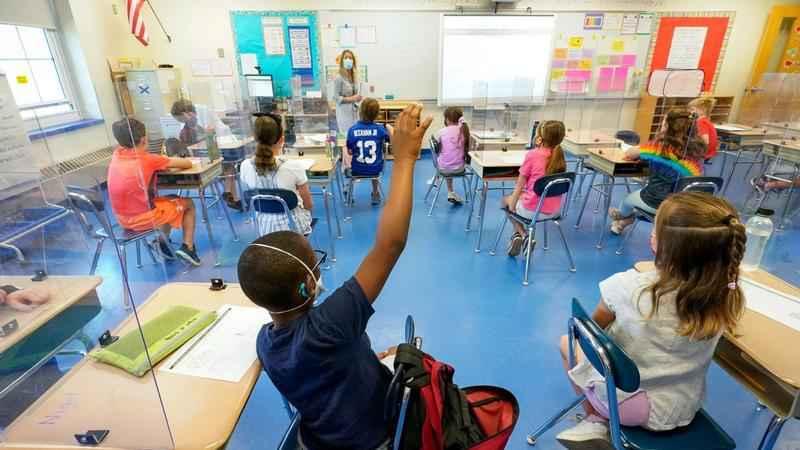Big changes come with anxiety as Minnesota children prepare to return to the classroom full-time
[anvplayer video=”5053588″ station=”998122″]
Seven-year-old Adeline Nelson is having fun playing putt-putt golf with her family.
But the second-grader at Great River Charter School in St. Paul says she can’t wait for classes to start next Tuesday.
“Very excited,” she says. “Seeing my class pet, my teachers and my friends. Just being with them and playing with them and stuff.”
Adeline certainly isn’t alone.
Many Minnesota schools will ring the first bell next week. But after a pandemic year, students, parents and school staff are facing many changes.

[KSTP]
Most students are returning to a full-time in-class schedule after a mix of in-person, remote or hybrid learning.
"She loves her friends and she loves school, everything about it,” said Kim Nelson, Adeline’s mom. “It’s the best time for her, and it’s something I can’t provide at home."
Adeline says she’s been missing her friends.
“Like, I’ve only gotten to see them on Zoom and it was, like, very sad that I didn’t get to be with them the whole of last year,” she said.
She adds she’s glad in-person school is starting again but is well aware of how things will be very different.
"I think they would really like it to be normal,” Kim Nelson said. “No masks, be able to be as close to their friends as they want. Eat in the lunch room. All the normal things."
She says for Adeline, that includes a "normal" school experience.
“She finished one grade at home and started the next at home and went back for a month last spring,” Kim Nelson recalls. “During that month, a kid in her class tested positive [for COVID-19], so back home again and back to school again, so it’s a lot of jumping around."
In a new school year unlike any other — where some Minnesota districts require masks and others do not — experts say those pre-school jitters can be magnified by COVID concerns.
“It definitely is stress. All these things are considered stressors, and we want to be attentive to that,” said Dr. Meghan Miller, a clinical psychologist with Allina Health.
She says this pre-school anxiety is uncharted territory for parents and kids.
"This overarching worry,” Miller notes. “Having some kind of internal angst about what’s to come. Wanting answers when there might not be answers available. … ‘What is the school day going to look like? What supports are available?’”
Christy McCoy says she’s hearing many questions like that.
She’s one of 127 social workers and counselors in the St. Paul Public School District. McCoy says protocols are in place to make students feel safe, including individual and group counseling.
"When students come back on day one, our first priority is to be really intentional in how we’re engaging every single student,” she says. “Setting some routines and rituals in place, and by doing things such as a morning meeting in elementary schools or having certain curriculum, community building curriculum and advisories at the secondary level."
Miller says Allina Health has partnered with 60 schools to launch a program for older students called Change to Chill.
“They have chill zones,” she says. “An actual space in the school that they can go and decompress, take a deep breath and collect themselves.”
Miller’s advice for parents?
Give your kids structure and a school-like schedule in this final week before classes so they are prepared when school starts, she says. And it’s important, Miller adds, to keep the lines of communication open between parents and kids.
"I think the other important factor is to continue to focus on how resilient kids are,” Miller said. “It’s proven time and time again that the bounce-back factor that kids have is really inspiring."
Nelson says despite everything that’s happened, she and Adeline are ready for the school year to start.
"We feel okay about it,” she said. “It’s nerve-wracking, but I think we’re as prepared as we can be. And I think she’s comfortable with it, too."